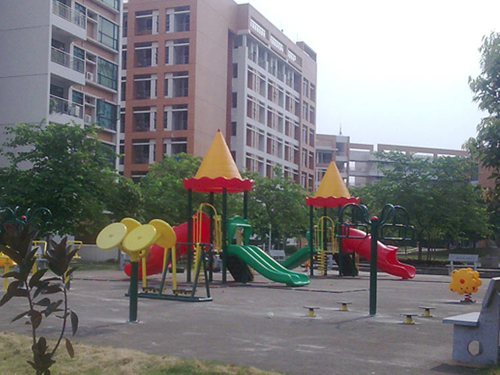Product Categories
- New outdoor Playground (29)
- Small Size Playground (40)
- California City (8)
- Nature Series (18)
- Space City (10)
- Rocket Series (9)
- Fantasyland Series (16)
- Animal Series (10)
- Tree House (15)
- Ice World (4)
- Pirate Ship (5)
- Tropical Series (4)
- Water Park (5)
- Fancy Series (24)
- Ocean Theme (18)
- Swings And Slides (22)
- Full Plastic (14)
- Fun Fitness (9)
- Spring Rider (59)
- Climbing Wall (21)
- Small Swing (20)
- Wooden Bench And Bin (24)
- Safety Mat On Floor (0)
News
- Looking for cheap home playground equipment?
- How to transform your backyard into a fun play area?
- Quotes of Cheap Playground Equipment in April.2017
- How Playground Culture Can Help A Child With Autism?
- Can outdoor play structure help kids gain self-confidence?
- Playground Equipment Is Simple & Effective For Children
- Enquiries of Cheap Playground Equipment in March.2017
- Playground Equipment: Let Your Child Create Sweet Memories
- Can I get cheap playground equipment for my community?
- Plastic Playground Equipments Keep Your Children Safe
Article
Kayaking Facts outdoor playground equipment
Facts to Remember
Some of the major kayaking facts are as follows:
1. The origin of kayaking can be traced to the freezing land of the Arctic at the North Pole. The Inuits first began to practice kayaking for hunting fish and seals and the kayak was their only medium of traversing the icy waters. The current form of kayaking has been modeled upon the Inuit style of kayaking. Sea kayaking was the first form of kayaking to be practiced followed by the whitewater kayaking much later.
2. Also, there is a misconception that stability is only important for amateur kayakers and that once paddlers gain experience, they can opt for swifter kayaks. This is incorrect and kayakers of any level must opt for kayaks with basic stability, especially when opting for fishing kayaks.
3. While buying a kayak, it is always good to opt for one that has a bulkhead. These bulkheads are great to store kayaking gear, food and clothes. Along with this, they also provide greater floatation in case the kayak tips over. Also, ensure that the kayak has a footrest inside as it provides great comfort to the feet while paddling. Also, a kayak with a rudder is a better proposition as rudders help greatly in tracking and maneuverability.
4. By the beginning of the 20th century the popularity of kayaking grew so much that it was recognized as a formal surface water sport. In 1936 it became a part of the Olympics and has since then has undergone radical transformation.
5. Also, the two main types of kayaks are the solo kayaks that accommodate one paddler while the tandem kayaks accommodate two paddlers. In a few rare instances, some tandem kayaks even accommodate three paddlers together.
6. Many kayakers feel that the sit-on-top kayak model is a newly designed type of kayak. However, this is a common misconception and in fact the sit-on-top kayaks have been in use since a very long time. Even in the US, the sit-on-top kayaks were introduced in the early seventies. The sit-on-top kayaks are the slowest among all kayaks.
7. There are two types of paddles - symmetric and asymmetric paddles. As the name suggests, symmetric paddles are symmetric at both ends and can be used either ways to paddle. Asymmetric paddle is usually used in racing with one side having a curve.
8. Usually kayaking on rivers is broadly categorized as whitewater kayaking. However, kayaking on difficult rivers is called as creeking. Creeking refers to kayaking on a waterfall, water slide and ledges.
9. In the modern times, the most widely used kayak types are plastic kayaks, fiberglass kayaks and fabric kayaks. Fabric is used for inflatable and folding kayaks, which have come to dominate the world of kayaking in a big way.outdoor play equipment

These are some of the most overlooked but important kayaking facts. Keeping these in mind can greatly help in enhancing the performance of the kayakers.



